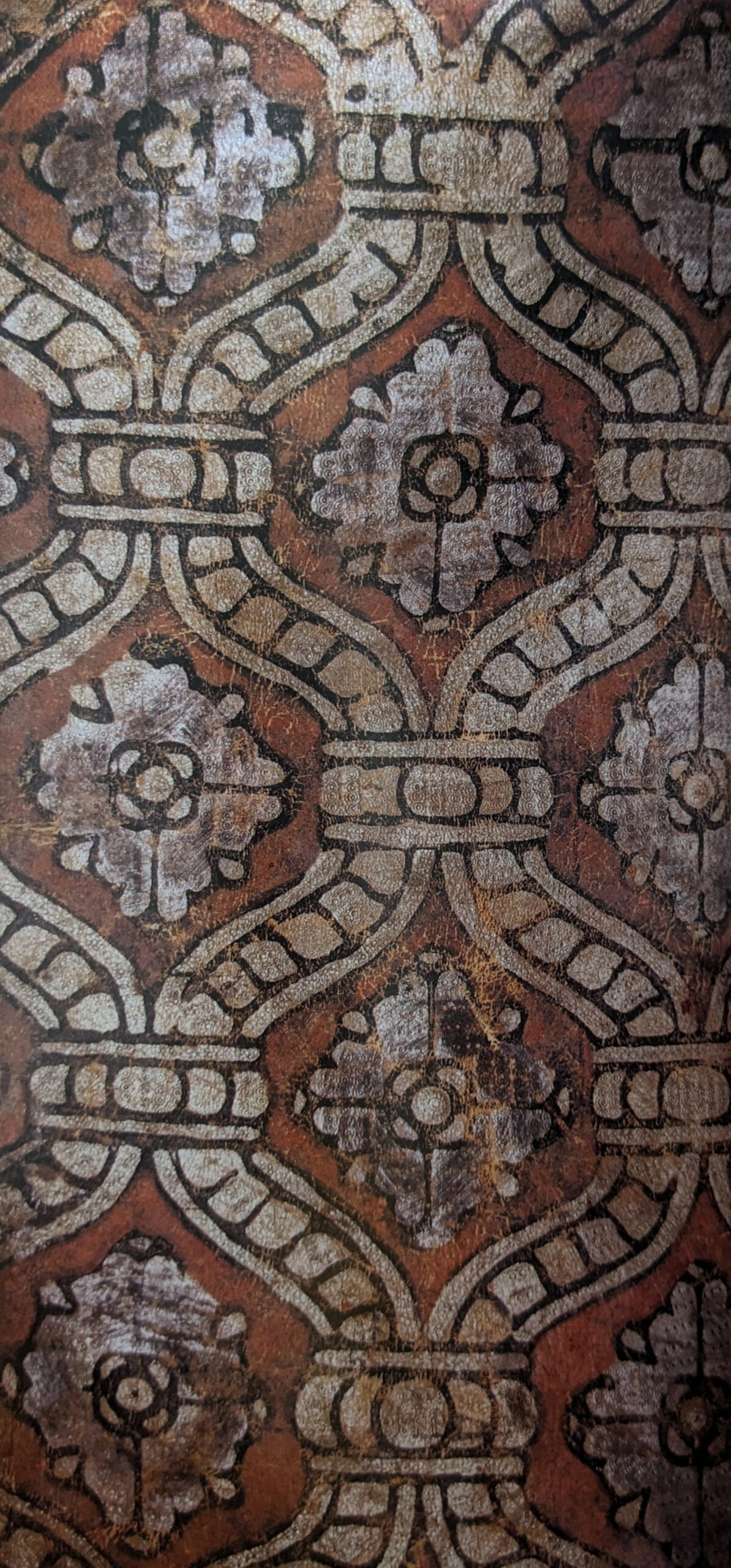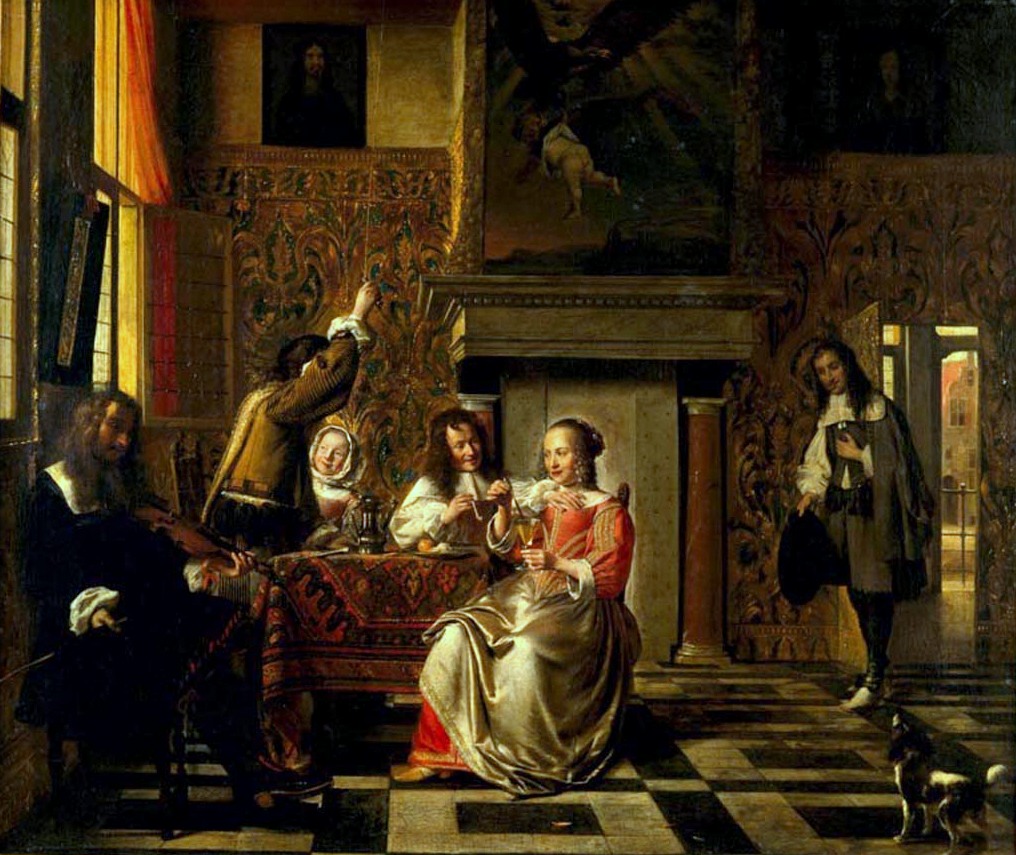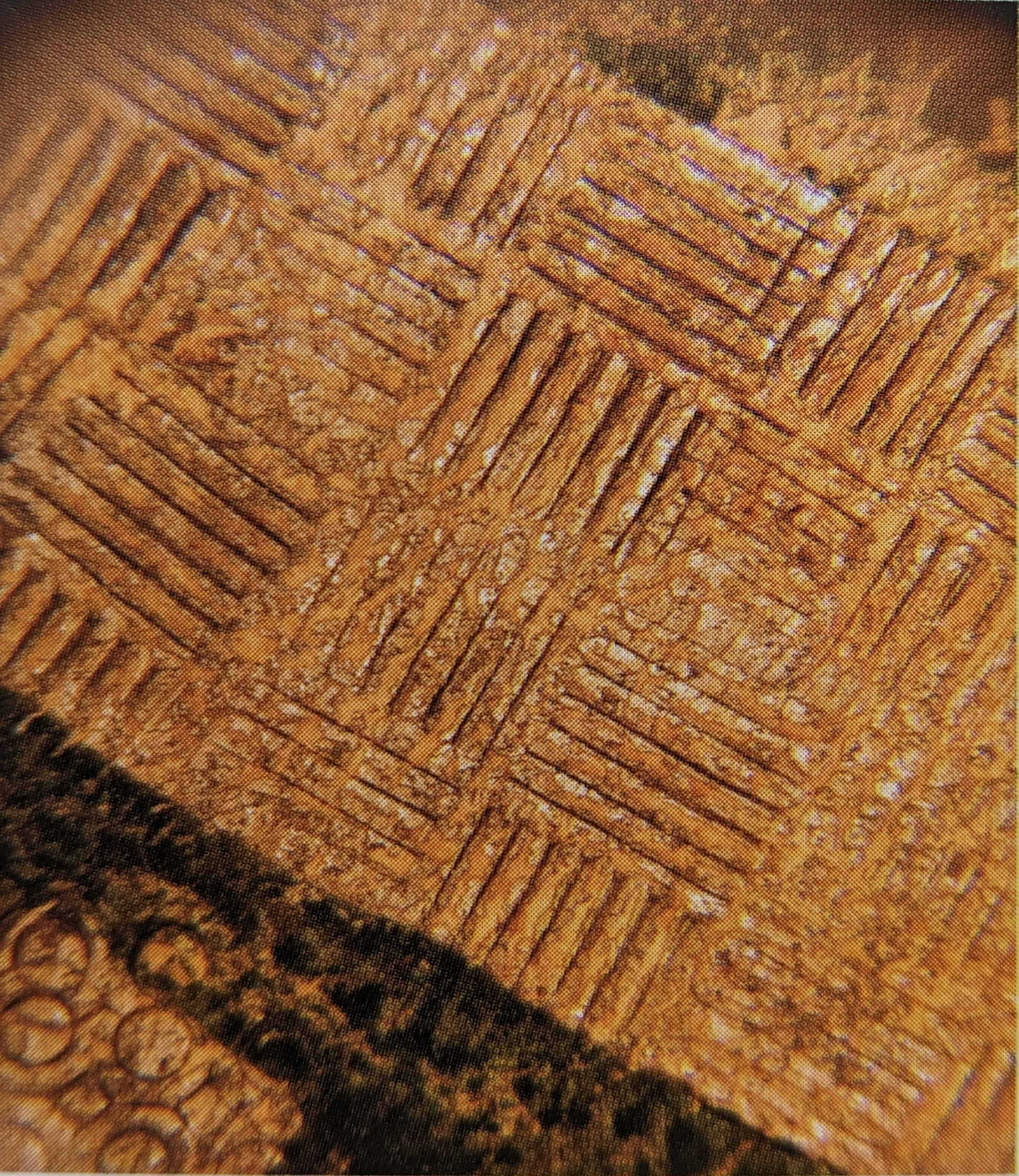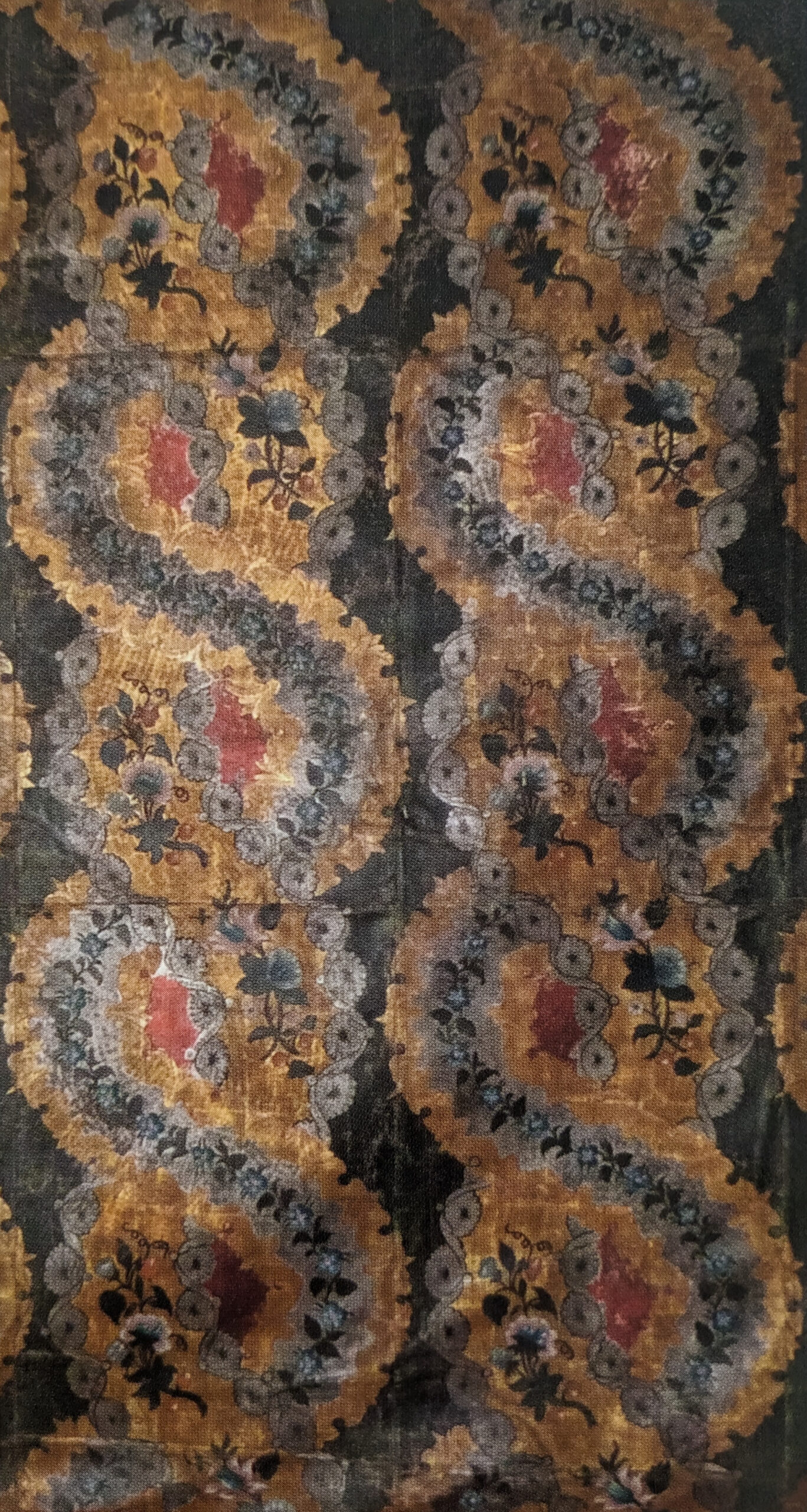An European story.
Decorating leather is a very old activity, probably as old as the history of mankind.
The subject we’re interested in now, the origin of gilded leather, can be traced back to Spain, probably around the 9th century.
In 711, Spain was conquered by the Moors. Cordoba became an important center of leather production from the 9th century onwards, producing decorative panels in gilded leather known as Guadameci.
What does the term “Cordoba leathers” mean ? According to the “dictionnaire des arts et sciences” by J.Hubner 1734 in Leyden; Cordovan leathers are goat leathers tanned in a specific way, they were called Cordobanes or Cordoba leathers.
By the 14th century, gilt-leather workshops had been established in several Spanish cities.
In 1477, Flanders came under the authority of the Spanish Habsburgs, and Spanish influence took hold.
In 1504, Phillip le Bel (the Handsome) bought “a tapestry of gilded leather made in the Spanish manner” from Robinet Lucas. From then on, names such as Valentijn Klee, maker of gilded leathers, became known, and invoices and inventories of leathers appeared. Manufacturers were established in Antwerp and Mechelen, followed by Brussels, Ghent and Liège in the early 17th century.

Gilt-leather: Spain, XVIe century.
At Real Sitio de San Lorenzo de El Escorial, Spain.
Courtesy “Cuirs doré, cuirs de Cordoue, un art européen”, Jean-Pierre Fournet.
This is the original leather that inspired our Domino panel.

1663-1665, La joyeuse Compagnie, Peter De Hooch.
At Museu Nacional de Arte Antiga, Lisbonne, Portual.
In Holland, however, a small revolution is brewing. The first workshop opened its doors in Amsterdam in 1612, and in The Hague in 1613. Jacob Dircxz de Swart sought new techniques for manufacturing his gilded leathers, and his efforts were crowned with success. On August 05, 1628, he obtained a grant for a period of 8 years, and his new technique of embossing leather using punch soon conquered the world.
JD. de Swart’s leathers are compared to goldsmith’s work rather than Spanish-style leathers.
In Flanders, the technique was quickly adopted. In Mechelen, where there were already major gilt-leather workshops, the activity took on an industrial dimension.
Antoon and Pieter Vermeulen employed no less than 120 people.
By 1716, there were 11 such workshops in Mechelen. Mechelen leather was exported all over the world.
The golden leather boom took place from the second
half of the 17th to the end of the 18th century.
As far as styles are concerned, before 1628, leathers were flat.
A design drawn with paint or stencil and then painted,
often decorated with small hammered ornaments.
Backgrounds are painted in one or more colors.

Leather decorated with small hammered ornaments on spanish leather from the XVIth.
Courtesy Jean-Pierre Fournet.

Panel of chiseled gilt-leather from Italia, late XVIIIth century.
Courtesy Jean-Pierre Fournet.
After 1628, the motifs become Baroque, with a multitude of garlands, fruits, flowers, insects and figures, cherubs and so on.
At the beginning of the 18th century, styles changed, becoming symmetrical and airy à la Française.
Daniel Marot set the example, as did the designs for silks and other textiles. Towards the middle of the 18th century, leather panels were glued together to create room-high strips. By the end of the 18th century, these strips were joined together to form panels that covered the wall without visible seams.
Gilded leather increasingly resembled textiles, and the decline of its identity was inevitable.
Changing fashions and tastes completed the decline.
In Mechelen in 1709, there were still five workshops, in 1739 four, in 1759 two, the last workshop closed, and, in 1797 it’s the end.
There were many other places where gilded leathers were made, but this production was often regional in character. Flemish and Dutch leathers were sold all over the world, and the quality of this work was unrivalled anywhere else.
In the centuries that followed, imitations – most of them mediocre – would appear here and there.
Since the late 1980s, gilded leathers have been catalogued, inventoried and meticulously restored. Dr. Eloy Koldewey has done extensive work to raise awareness of the value of this heritage, which until recently had been neglected. In France, remarkable work has been undertaken by Mr. Jean – Pierre Fournet, today certainly one of the greatest specialists in the field.
We’ve been interested in gilded leathers since the early 1980s.
Initially, we were interested in the historical aspect and the evolution of designs. Then we turned our attention to the technical aspect. From then on, there was no turning back – our factory was on track, the Lutson workshop had become a reality.